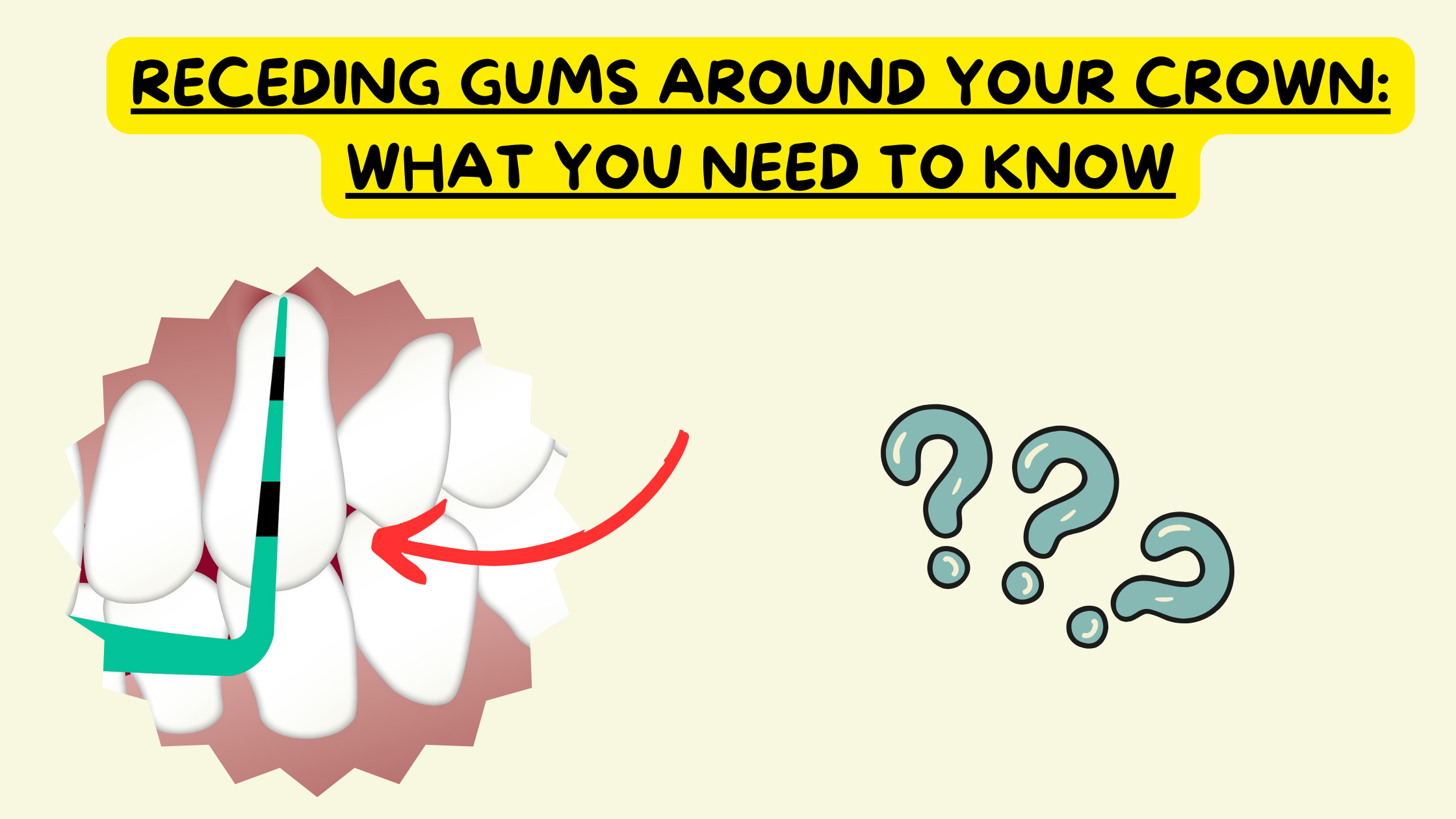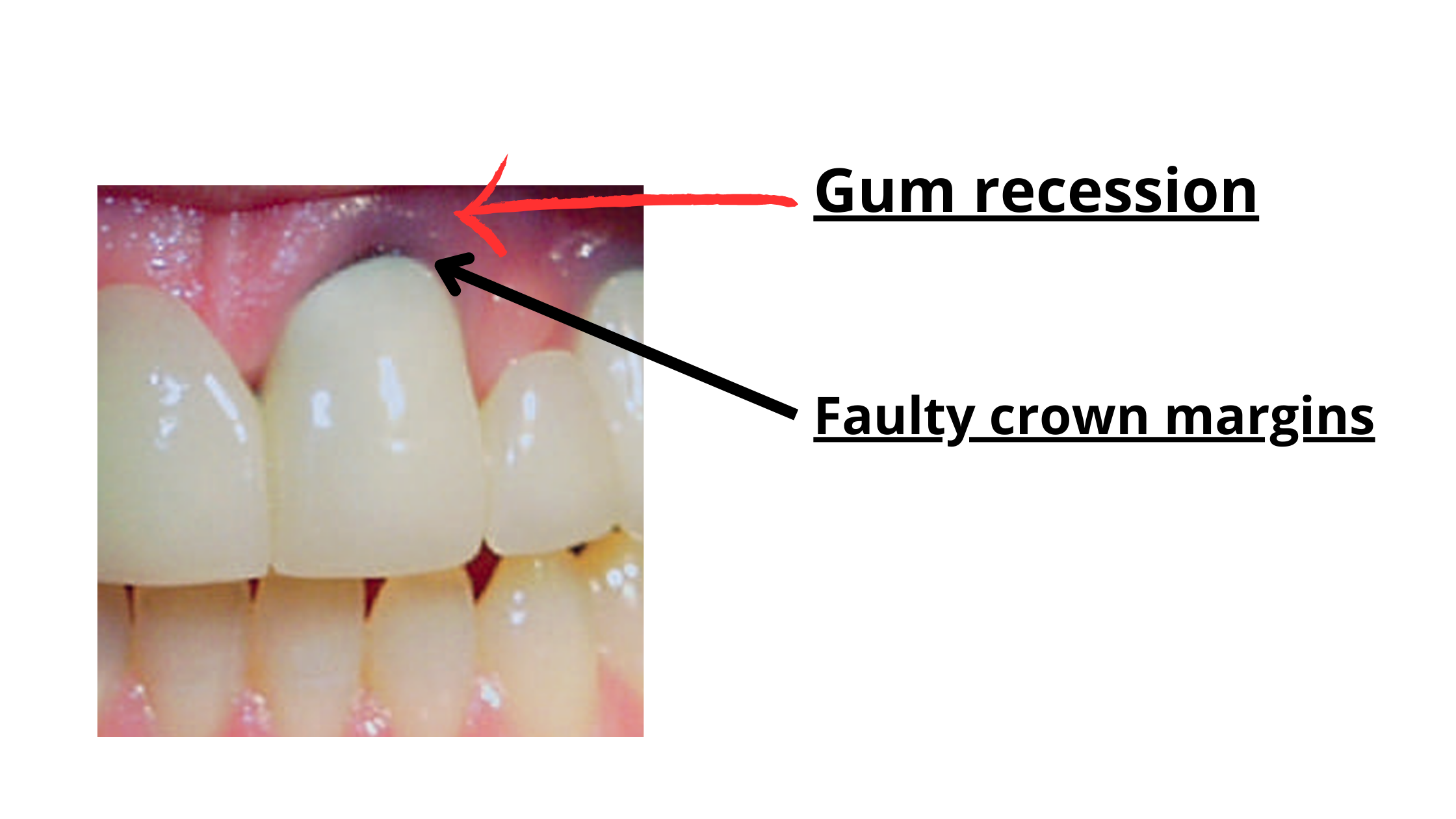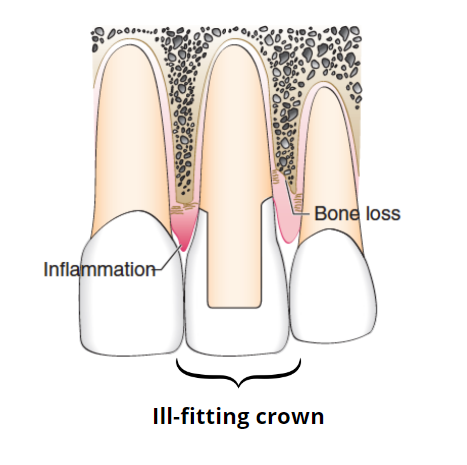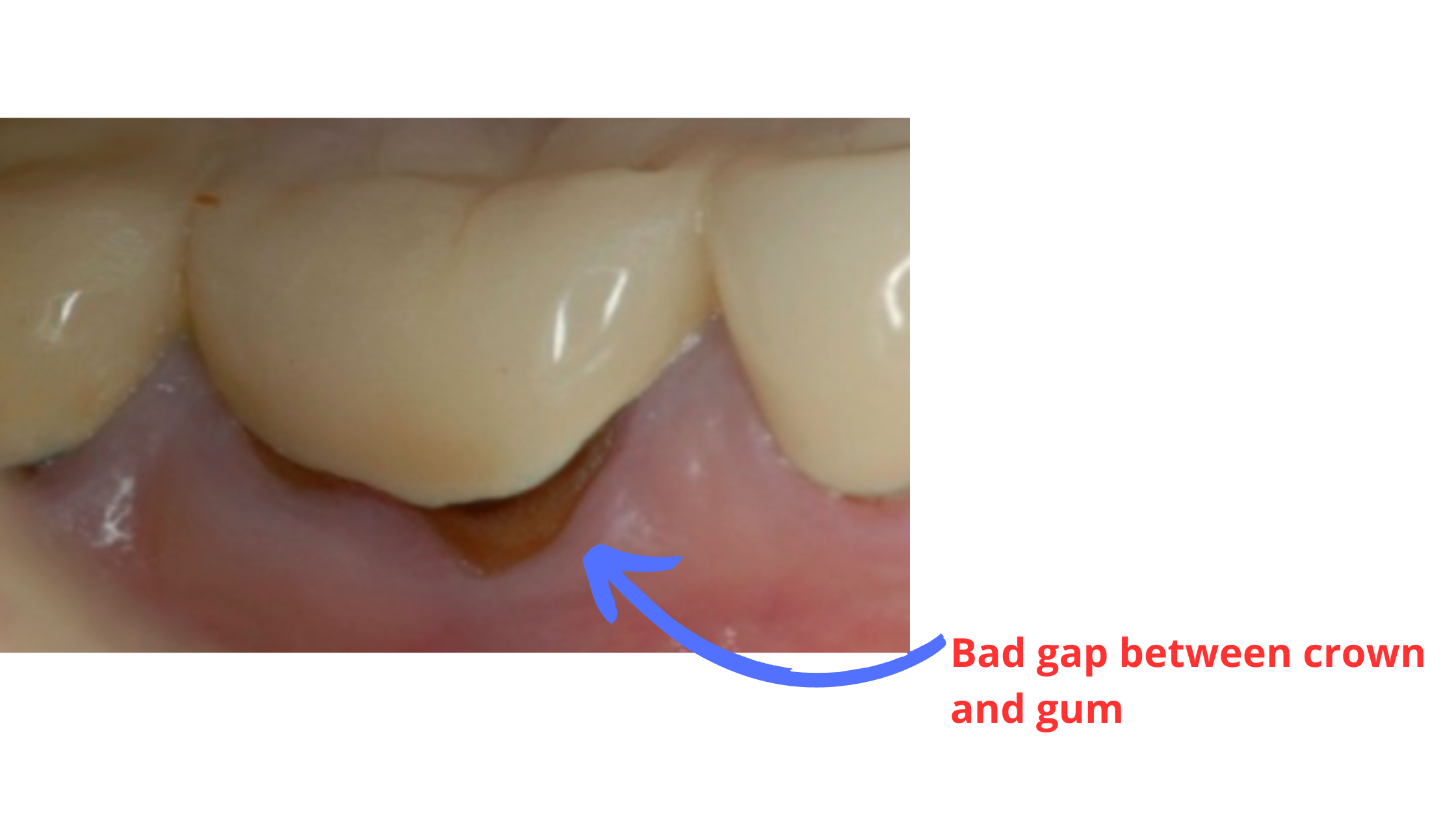Is Your Dental Crown Causing Gum Recession? Here’s What You Should Know
 Receding gums can happen for many reasons. But when it starts around a dental crown, it’s normal to wonder if something is wrong — and what you should do next.
Receding gums can happen for many reasons. But when it starts around a dental crown, it’s normal to wonder if something is wrong — and what you should do next.
In this article, we’ll break down this common issue: why it happens, whether your crown might be faulty, and the treatment options available to fix it.
Table of content:
1. How Can a Faulty Crown Cause Receding Gums?
2. Bad Gap Between Crown and Gums
3. Receding Gums Can Be Caused by Other Factors
4. Will I Have to Redo My Crown?
5. Can I Recover Receding Gums Caused by a Faulty Crown?
How Can a Faulty Crown Cause Receding Gums?
Receding gums around a crown can indeed be a sign that your crown is faulty, but not always!If the crown is the problem, it’s often because its borders or margins (where the crown meets the tooth) are set too deep below the gum line.

When placing a crown, the dentist decides where the margins will meet the tooth once the crown is fully seated. Usually, there are two main options:
- Place the crown margins deep below the gum line
- Place the crown margins above the gum line
The first option is more cosmetic because the margins are hidden under the gum line and not visible. However, it’s harsher on the gum tissue. When crown margins sit too deep, they put extra stress on the gums, which can lead to inflammation, bleeding, gum recession, and even bone loss.

The second option — placing the margins above the gum line — is better for the gums.
This margin placement doesn't put extra pressure on the surrounding tissue and helps keep your gums and bone healthy.
The only downside? The crown margins are visible, which can be less cosmetic. That’s why this option is usually chosen for back teeth that aren’t seen when you talk or smile.
But if you need to crown a front tooth (one that shows when you smile), your dentist often has to find a balance between looks and function.
Placing the margins too high (above the gums) can make your crown appear bad and fake. On the other hand, if the crown sinks too deep under the gums, it's an open invitation for problems like gum disease and bone loss.
So the best approach is to hide the margins slightly under the gums — just enough to look natural without causing harm.
A Bad Gap Between Your Crown and Gums Can Also Lead to Gum Recession
This is another common situation where a crown can lead to gum recession.A crown should fit snugly over the tooth, without leaving any gaps where bacteria and food particles can collect.
If the crown doesn’t fully seat and leaves small spaces, it can cause gum inflammation, recession, tooth decay, infections, and bad breath.

It’s often hard to notice gaps on your own, but there are some telltale signs you should look out for:
- Greying or darkening around the gum line
- Swollen gums that bleed easily
- Persistent bad breath
- Food getting trapped around the crown margins
Receding Gums Can Be Caused by Other Factors
While a faulty crown can definitely cause receding gums, there are other — and often more common — reasons behind it.The number one cause of gum recession is plaque buildup.
If you neglect brushing and flossing, bacteria can grow and form a sticky, whitish film called plaque around your crown. This doesn’t just make your gums pull away — it can also lead to tooth decay, bad breath, and even infections.
Another common cause is trauma to the gums.
Anything that causes constant irritation can harm your gum tissue over time. Think brushing too hard, using a hard-bristled toothbrush, or having something that repeatedly rubs against your gums. Eventually, these bad habits can injure the gums and cause them to recede.
Will I Have to Redo My Crown?
When your gums are receding around a crown, the first step is to figure out what’s causing the problem — and to stop the damage from getting worse.If the crown itself is the culprit (for one of the reasons we talked about earlier), fixing or replacing the crown might be all you need to stop the damage from getting worse.
Usually, there are two main options:
- Crown Lengthening (without redoing the crown): If the crown is healthy but sits too deep below the gum line, crown lengthening might be a good solution. The goal of the procedure is to move the faulty crown margins higher above the gum line. This puts your crown at a healthier level and protects your gums from further damage, while letting you keep your existing crown.
- Redoing the Crown: If the crown doesn’t fit properly, is too old, poorly shaped, or worn out, the best option is usually to remake it. During the new crown procedure, the old margins are removed, and the new ones are placed at a healthier level to prevent more gum problems.
If your crown is well-made and fits properly, and it turns out the crown isn’t causing your gum recession, then other factors are likely to blame, like poor oral hygiene or aggressive brushing.
In that case, you’ll need to adjust your brushing technique:
Brush gently using small circular motions instead of rough, back-and-forth scrubbing. And if you’re using a hard-bristled toothbrush, switch to a softer one.
Either way, it’s best to visit your dentist. You may have gum disease that needs professional treatment, such as deep cleaning (scaling and root planing).
Can I Recover Receding Gums Caused by a Faulty Crown?
Once the gums start to recede, they can’t grow back on their own.The good news is that several procedures can rebuild your gums and restore their natural appearance.
To keep it simple, there are two main surgical approaches:
- Flap Technique: This involves lifting a section of nearby healthy gum tissue and repositioning it to cover the area of recession.
- Gum Grafting: This involves taking a small piece of tissue from another part of your mouth (usually the roof of your mouth) and placing it over the affected area.
However, not every case of gum recession needs treatment.
If the recession doesn’t cause any sensitivity, doesn’t bother you, or doesn’t affect your smile, you might not need anything more than good daily oral care.
Typically, gum recession is treated when:
- It’s actively getting worse.
- It causes sensitivity, especially to cold or hot foods and drinks.
- It affects the front teeth — the ones that show when you smile.
- You are prone to root decay.